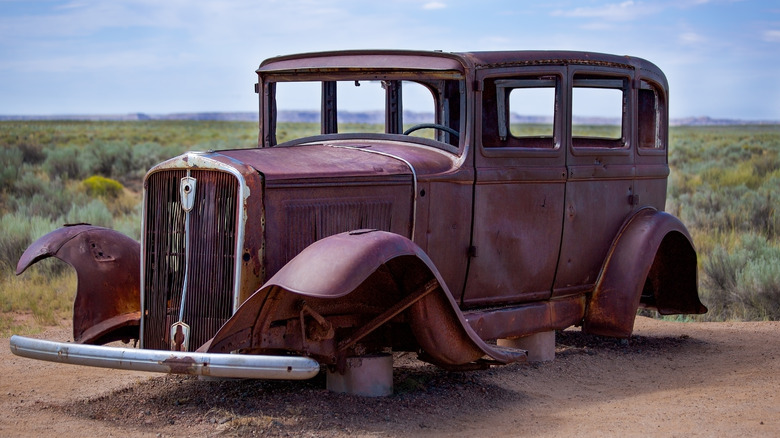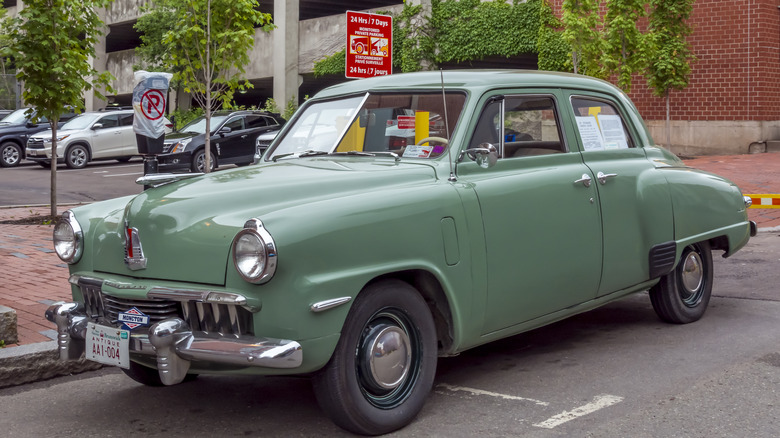Why Did Studebaker Stop Making Cars?
When it comes to works of art, novels, or even cars, they're sometimes not entirely appreciated during their time, with future generations giving credit and praise that would have been more helpful in the past. This appears to be the case with Studebaker, the now revered car company that's garnered more respect in the decades after the era in which it struggled. You're not likely to see one zipping down the street outside of a car TV show, as the last Studebaker rolled off the line in 1966. So, what happened?
The Studebakers were a German family of blacksmiths who founded their company in 1852 and they incorporated in 1868 as the Studebaker Brothers Manufacturing Company, originally producing carriages, wagons, and buggies for decades. It may sound like a rather humble business, but by the mid-1880s production exceeded 75,000 and made the company over $2 million, despite a few major fires that nearly destroyed the business. Back then, Studebaker had a few rather prominent customers, including U.S. presidents Ulysses S. Grant, Rutherford B. Hayes, and Abraham Lincoln, who rode in a Studebaker the night he was assassinated at Ford's Theater — not that there's any connection there. Those carriages weren't exactly Air Force One.
As the century changed, so did Studebaker's strategy within the evolving transportation industry.
Evolving into the modern era
Unlike many other carriage companies, Studebaker was able to fully transition into a prominent automobile company, and in the early 1900s Studebaker entered the modernizing industry in 1902 with electric vehicles and 1904 with gasoline versions, completed in partnership with other brands. It's like a typewriter company seamlessly transitioning to computers. In 1912, Studebaker marketed its first fully manufactured gasoline automobile, and in the years that followed went on to become a highly regarded and successful brand in the automotive industry.
Prosperity followed in the 1920s, with the production of vehicles in the lower to mid-range price, including popular models like the 1920 Studebaker Big Six. But it's believed that company management misread the depth of the Great Depression, and they went into receivership in 1933. Studebaker limped along for years and seemed to recover, with the company gaining a foothold in the truck field, and also later producing such successes as the low-priced, six-cylinder Champion. After World War II they even adapted with new styles to fit the taste of the post-war industry, including models like the Starlight Coupe, which featured wraparound rear-windows and the so-called "bullet nose."
Studebaker ultimately faced financial difficulties in the mid-1950s and merged with Packard, posting a $43 million loss in 1956. The 1959 Lark led to profitability for a few brief years, though problems persisted and the South Bend plant closed in 1963, with the last Studebaker rolling off the line in Hamilton, Ontario, in March 1966. Still, 114 years is certainly a good run for any automobile manufacturer, and numerous collectors still keep Studebaker's memory alive today.

